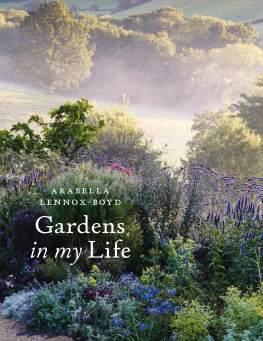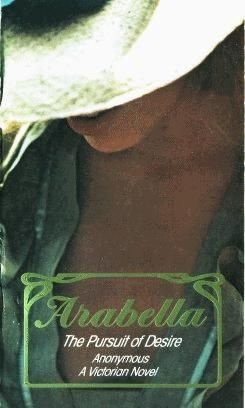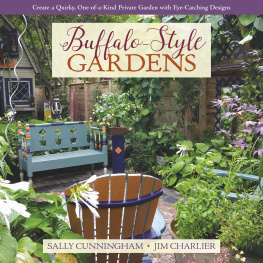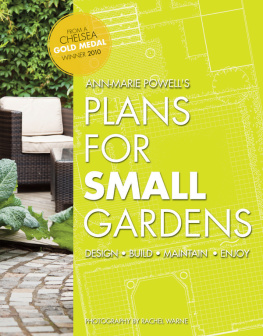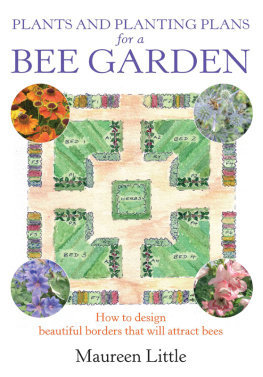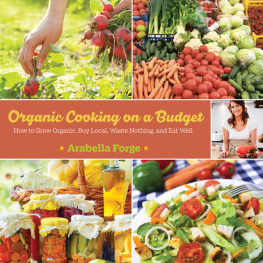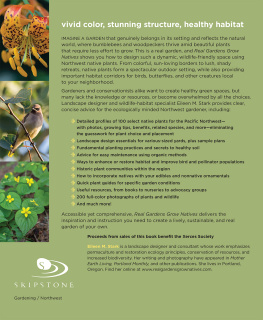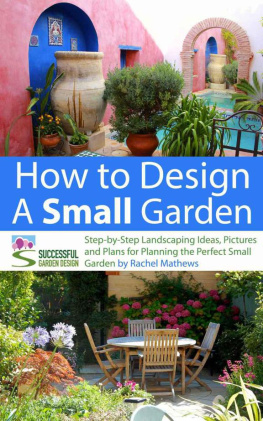Arabella Lennox-Boyd - Gardens in My Life
Here you can read online Arabella Lennox-Boyd - Gardens in My Life full text of the book (entire story) in english for free. Download pdf and epub, get meaning, cover and reviews about this ebook. year: 2021, publisher: Head of Zeus Ltd, genre: Home and family. Description of the work, (preface) as well as reviews are available. Best literature library LitArk.com created for fans of good reading and offers a wide selection of genres:
Romance novel
Science fiction
Adventure
Detective
Science
History
Home and family
Prose
Art
Politics
Computer
Non-fiction
Religion
Business
Children
Humor
Choose a favorite category and find really read worthwhile books. Enjoy immersion in the world of imagination, feel the emotions of the characters or learn something new for yourself, make an fascinating discovery.
- Book:Gardens in My Life
- Author:
- Publisher:Head of Zeus Ltd
- Genre:
- Year:2021
- Rating:4 / 5
- Favourites:Add to favourites
- Your mark:
- 80
- 1
- 2
- 3
- 4
- 5
Gardens in My Life: summary, description and annotation
We offer to read an annotation, description, summary or preface (depends on what the author of the book "Gardens in My Life" wrote himself). If you haven't found the necessary information about the book — write in the comments, we will try to find it.
Gardens in My Life — read online for free the complete book (whole text) full work
Below is the text of the book, divided by pages. System saving the place of the last page read, allows you to conveniently read the book "Gardens in My Life" online for free, without having to search again every time where you left off. Put a bookmark, and you can go to the page where you finished reading at any time.
Font size:
Interval:
Bookmark:

Gardens in my Life
ARABELLA LENNOX - BOYD
AN APOLLO BOOK
www.headofzeus.com

A curtain of Rosa Pauls Himalayan Musk frames a rosy view of the lower terraces, skirted by Hosta Francee (left), Hosta Patriot (right), a white mound of scented Philadelphus Beauclerk and a cloud of Thalictrum delavayi behind it.
Allan Pollok-Morris.

A detailed view of the annual wildflower mix along the lake includes Cosmos bipinnatus , cornflower and wild carrot.
Andrew Lawson.

At the centre of Gresgarths Kitchen Garden is an Italian orcio, a traditional container for olive oil, planted with Plectranthus argentatatus
Andrew Lawson.
A FEW MONTHS AGO I WAS looking through my files when the list of gardens I have designed over the last fifty years caught my eye, starting with the very first garden I actually owned in Cavendish Avenue, St Johns Wood. I am Italian by birth and it was not until I was in my twenties that I came to England. The house had only a fourteen-year lease but in 1968 I was still young enough to think that that was a very long time. The house and garden were large and beautiful; the building was detached and there was a huge lawn with lovely pear trees planted along the brick wall which surrounded the house on three sides. It felt like being in the country. At the front was a garden big enough for me to park my Fiat I think it was a 1550, but cannot be sure. I remember that the car had sufficient space for my daughter Dominique and I to pack it full of all the paraphernalia needed for a two-month holiday, and for us to feel comfortable for the three-day drive across France and into Italy.
This was the very first garden I designed but my love of nature started when I was a child. My early years were spent in the country, in the Sabine hills just below the Apennines, the mountain range which extends along the length of Italy. The hills are covered with olive groves and cultivated fields with huge woodland areas on higher ground. I remember the sense of freedom of being able to walk anywhere, with few formal roads for motorcars and only donkeys and mules offering the final mode of transport to our village. We often visited Rome and used to drive from the city to a tarmacked place where a farmer provided animals to carry my mother, my English nanny and me on the five-hour trek to our village. This included time for a picnic lunch. When I was older, I was encouraged to become a Brownie and then a Girl Guide. As I was an only child I relished the idea of belonging to a group where loyalty, kindness and the love of animals and nature were the main principles. Then there was the utter pleasure and fun of camping in the hills outside Rome, singing round a fire as it got dark, cooking our own food, and the freedom of the empty countryside. This gave my life new purpose and meaning, and a set of values I have always tried to follow. I realised that I was my happiest when connecting with the natural world.
After a few difficult years in Italy and England in the Sixties, I found myself on my own with my daughter. My accountant came to my house for a formal talk and told me that I would have to think of working to supplement my income. I was astounded for I had no experience of work and knew very little about money. I had been brought up by parents who expected me to get married and to not even think about a job. I therefore decided to work with an old friend, Alessandro Albrizzi, who was designing very cutting-edge furniture. On the advice of another friend, I then enrolled on the long course in Landscape Architecture at Thames Polytechnic (now Greenwich University), on a day release program whilst working at the same time. It was the beginning of a wonderful and fascinating life learning about design and the environment, and also about the miraculous world of plants, whether in the wild or in cultivation.
I had finally discovered a way of combining my passion for design with my interest in plants, which I now realise I knew very little about at the time. All the wonderful memories of the days when I was truly in touch with nature came flooding back and I felt that a new and promising period of my life had started. With the help of my tutors and friends I set up my own little business working from home and designing small London gardens. I was making ends meet but, more importantly, I was happy.

I love chickens in my garden. These are Marans, which happily coexist with the autumn-hued Euonymus alatus Compactus and Hydrangea paniculata Vanille Fraise.
Andrew Lawson.

At Gresgarth: Alpine Dianthus Red Star and sempervivums are planted in an antique granite trough with Rosa mundi and Delphinium Blue Jay nearby.
Allan Pollok-Morris.
I always say that my true life began then. I enjoyed meeting new clients and working in different places with diverse soils and climate, each with their own problems and possibilities. I learned that to design a garden you need to have an understanding of harmony and composition, you need to create a garden that is a world of its own, suited to the place and its owner. Every garden is unique; one has to take into account the wishes and constraints of each client. In nearly all of my projects I have found that obstacles and difficulties were a blessing because they made me think outside the box and come up with ideas to circumvent those problems. This has always resulted in better and more interesting designs and given me a real sense of achievement.
Roberto Cardozo, a landscape architect who was one of my tutors at Thames Polytechnic, taught me the importance of observation and about using the senses to gather information when walking around a site. He taught me about volume and space. He used to say that one should feel and imagine a landscape as a great mass with open spaces carved out of the volume.
I think that the power of observation and the curiosity I had unconsciously developed made me want to learn from everything and everybody. Obviously being brought up in Rome meant that the architecture of the city and the classical gardens my parents took me to very much informed my approach to garden design. An early visit to the magical garden of Ninfa, south of Rome, also had a profound influence on me. It is where I found my true inspiration which was to shape most of my work. As an inscription over the corner arches in the Red Fort built by Shah Jahan says, If there is Paradise on earth, it is this, it is this, it is this.
Our desire to connect with the natural environment and to recreate ideal landscapes is once again at its most powerful as we seek out reflection and quietness in a world in turmoil. We wish to return to what we believe to be the essential principles of nature. I think that reading about gardens their design and their purpose in order to understand their historical significance and put them into context is important, and should help form ones own ideas, style and approach to designing. But it is most essential to visit gardens so you can assimilate and understand the atmosphere and spirit of a place.
Font size:
Interval:
Bookmark:
Similar books «Gardens in My Life»
Look at similar books to Gardens in My Life. We have selected literature similar in name and meaning in the hope of providing readers with more options to find new, interesting, not yet read works.
Discussion, reviews of the book Gardens in My Life and just readers' own opinions. Leave your comments, write what you think about the work, its meaning or the main characters. Specify what exactly you liked and what you didn't like, and why you think so.

